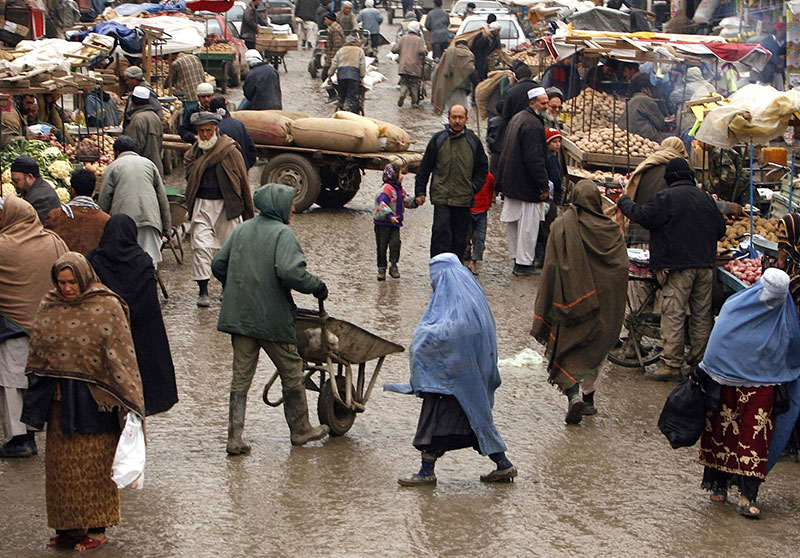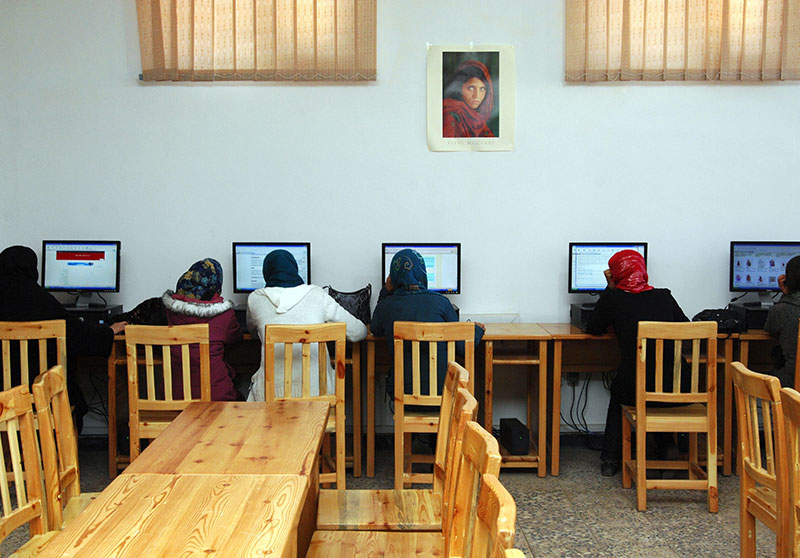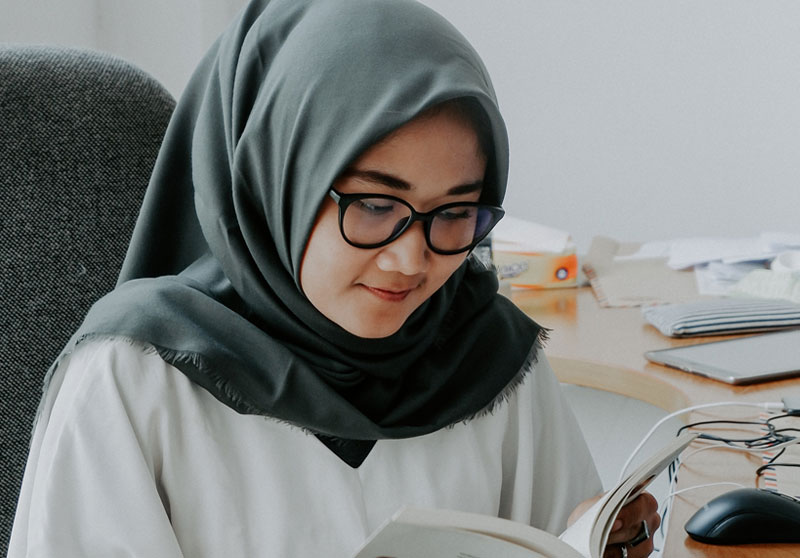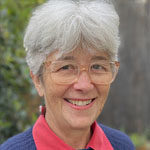Perception of Muslim men and women
In a recent essay I was surprised to read several statements by the author about what ‘Muslims’ say, how they react, or engage in conversation, which did not align with my own experience over some decades interacting with Muslims. Then I realized the author was male; when he said ‘Muslim’ he was describing Muslim men. It is not an uncommon experience as I read books on Islam or listen to speakers. Islam exists in many gender-shaped cultures. And texts from the Qur’an and hadith (Traditions) mark differences between male and female Muslims in issues of faith practice and daily life. Men who are not given the opportunity to interact with Muslim women may assume that all Muslims, regardless of gender, react the same way, or simply discount the perspectives and questions that occupy Muslim women.
Muslim women are united by gender and by religion, but there are many other factors which shape them.
If many of the comments about ‘Muslims’ are about Muslim men, the dominant images of Islam in popular media tend to be veiled women. However, if we talk about ‘Muslim women’ as a single undifferentiated category, we run the same risks of reductionism. Muslim women are united by gender and by religion, but there are many other factors which shape them. Religious texts and cultural themes are realized in different ways for people according to their circumstances, their home and family, and life events. The communities into which people are born play an important part in forming how someone perceives themselves, others, and the world. A person’s name, clothing, jewellery, and the area in which they live, suggest clues of the community to which they belong. These belongings shape everyday interactions, from degree of friendship to job openings or romantic possibilities, and finally place of burial.
In each encounter we need to ask, who is this woman? What is her experience, and what influences have shaped her life to this point? These may include her class background, education, family wealth and family connections, and also her status within the family— whether she is married and has children. Which branch or sect of Islam she belongs to, which geographical location she is from, and her ethnicity, will all substantially affect her life experience, opportunities, and expectations.

Muslim women in Afghanistan
There has been much discussion of Muslim women in Afghanistan and what they face since the recent rapid takeover by the Taliban. A closer look within this country which has been so much under scrutiny shows how even within one country we find many differences among the Muslim women that make up half of its population. Within Islam there are significant sectarian distinctions. Sunni is the dominant sect within Afghanistan; Shi’a make up approximately 10 percent. Most of the Shi’a are to be found among the Hazara and the Qizilbash. Shi’a are principally Twelver,[1] with some Ismaili (often a more liberal form of Islam) also. Sufism (mystic Islam) has also strong roots in Afghanistan. Naqshbandiya, Qadiriya, and Cheshtiya are significant Sufi orders within the country. Mevlevi Sufis, who practice the ‘whirling dervish’ ritual dances, have recently included women dancers and teachers.[2] While these groups are likely to face oppression under the Taliban, it indicates the very varied religious experiences within even different Muslim groups in Afghanistan today.
Ethnic origins also are significant in shaping the place of women and the opportunities they have, as well as the language they speak.
Ethnic origins also are significant in shaping the place of women and the opportunities they have, as well as the language they speak. Pashtuns make up about 40 percent of the population, principally in the southeast, south, and west, with some pockets in the north. They speak the Pashto language, and adhere to the ‘Pashtinwali’ code of living.[3] The Tajiks (around 25 percent) live primarily in the northeast, the northwest, and urban centres, and speak Dari. Hazaras (about 10 percent; many have emigrated) are found in the centre, Kabul, and Mazar-e Sharif. Uzbeks (6-9 percent) are in the north, and speak Uzbek, a Turkish language. Other ethnic groups include Aymaks (Sunni Persian-speaking groups in the northwest), Turkmens (along the border with Turkmenistan), Baluchis (in the southwest), and Nuristanis and Pashays (northeast of Kabul).[4]
The majority of people in Afghanistan are from rural areas, which tend to be more conservative than urban centres. For many rural women, their life, including religious, cultural, and family restrictions, may not have included much more opportunity before than they face under the Taliban now. Women in nomadic groups have traditionally had more opportunity for movement. Dress styles for Muslim women vary across the country from the all-enveloping chador or comprehensive burka through to a headscarf worn with trousers and hip-length top.

Women in public space
Some women, whether urban, from wealthier, or more liberal families, have had more opportunities in education and public involvement. A 2012 post suggested that: ‘In 1964, women helped draft the Constitution and there were at least three women legislators in Parliament by the 1970s. Women fulfilled roles as teachers, government workers, medical doctors, lawyers, judges, journalists, writers, and poets up until the early 1990s. Moreover, women had constituted 40 percent of the doctors in Kabul, 70 percent of school teachers, 60 percent of Kabul University professors, and 50 percent of the University students.’[5]
Women in public life have faced opposition and even death in Afghanistan, including in non-Taliban times.
However, women in public life have faced opposition and even death in Afghanistan, including in non-Taliban times. Nadiaa Anjuman began attending an underground school and literary circle under the Taliban, the Golden Needle Sewing School. After the Taliban were ousted, she started her formal education at Herat University, and became a prolific poet, until her husband killed her for writing poems about women’s subjugation and attending events. Lieutenant Colonel Malalai Kakar, from a conservative family, was the first woman to graduate from the Kandahar Police Academy, and focused on investigating gender-based violence. She was assassinated by a Taliban gunman in 2008.[6] Shamsia Hassani, a professor of fine arts at Kabul University, has become internationally well-known over the past decade for her striking graffiti art on the streets of Kabul, promoting women’s faces and voices in public spaces. Even when the city was under Afghan government control, her work was risky. In 2018 she commented that ‘I am really scared of public spaces. I am really scared of explosions happening all the time. And specifically, it’s difficult for women to do graffiti and street art because usually people are not happy with women’s activities . . . all the time I am careful.’[7]
Many women who have been involved in the public sphere will certainly face increased restrictions under the Taliban, whether government workers, flight cabin crews, or athletes. Many of the 270 women who have sat as judges in Afghanistan in the last twenty years, some of the most powerful and prominent women in the country, are currently in hiding.[8]
The Taliban have said that they will allow women to study at university, but will enforce dress codes and gender segregation.[9] So how much will have changed? Gender segregation was adhered to in primary and secondary schools in Afghanistan prior to this, and girls in high-school had to wear white headscarves and tunics reaching to their knees. While universities did not enforce segregation and a dress code, most female university students chose to wear headscarves.[10] The world is waiting to see how this develops. Even requirements of strict segregation in some countries can open up opportunities for women, where teaching institutions require female staff, and women midwives and women doctors are wanted: as for example in Iran (Shi’ite) and Saudi Arabia (Sunni).

Many people are preparing now to welcome Afghani refugees who have sought asylum in the West, or seek to care for refugees sheltering in refugee camps and communities in neighbouring countries across the border from Afghanistan. How shall we meet them? A recently published book, Islam and Women: Hagar’s Heritage,[11] seeks to explore the worlds of Muslim women, through looking at texts and cultural themes, and how they shape the everyday lives, experiences, and possibilities for Muslim women in different countries and contacts around the world. Questions at the end of each chapter offer the reader the chance to learn more about the contexts and cultures within which they are relating to Muslim women.
The story of Hagar
Hagar is an Egyptian slave in the household of a family in Canaan. Abused, she flees and God hears her cries and sees and meets her. She becomes the first woman in the Old Testament to give God a name—El Roi, the One who sees. God returns her to her situation of slavery; but when Sarah and Abraham send her and her son Ismail away again into the desert, God meets her anew and promises descendants and greatness to Ismail. Hagar’s journey is re-enacted every year by millions of Muslims in the Hajj pilgrimage at Mecca. At the heart of both Christian and Muslim narratives we find the story of a mother fleeing, seeking to save her son.
At the heart of both Christian and Muslim narratives we find the story of a mother fleeing, seeking to save her son.
Like so many women today, Hagar becomes a refugee and a single mother. Her precarious situation of powerlessness echoes that of women in similar situations of marginalization and isolation. Each time as she cries out in despair, Hagar is seen by and sees God, who appears to her and cares for her. In this way Hagar prefigures women who are oppressed or victimized, and who experience God’s care, enabling them to retake agency and initiative and rebuild their lives. Her story, with that of other women, points forward to how Jesus honoured marginalized women. Hagar invites women, whatever the cultural attitudes that they encounter, to take up their role as co-image-bearers of the Divine, called into relationship with God.
Reflection: Meeting Muslim women
Muslim women today number almost a billion, 12 percent of the world’s population, spread across the globe. When we meet a Muslim woman, who are we meeting? What has been her experience of daily life and faith? Our role is not to make generalizations about those women we encounter and their backgrounds, history, or education, but rather to listen well and to ask questions about them or the communities from which they come. Wherever we encounter them, we seek to understand their unique situation, and point them to the God who fully sees and loves them.[12]
We seek Bible stories (like Hagar’s story) that may connect with their lives: stories of God answering the prayers of women, of Jesus’ interaction with and care for women. We pray that as they hear these stories, Muslim women can also glimpse their own significance to God, and their story as part of God’s overall plan in history through Jesus Messiah.
Endnotes
- Twelver Shi’ites believe in twelve divinely ordained successive Imams from Ali (Muhammad’s nephew and son-in-law), of whom the twelfth was occulted, and will reappear as the promised Mahdi at the end of time.
- Nadia Khan, ‘Afghanistan – Female Whirling Dervishes Reclaim Afghan Sufi Heritage,’ WUNRN, 18 February 2021, https://wunrn.com/2021/02/afghanistan-female-whirling-dervishes-reclaim-afghan-sufi-heritage/; Tameem Akhgar, ‘ Young Afghan women, men perform whirling Sufi dance together,’ abcNEWS, 22 September 2020, https://abcnews.go.com/International/wireStory/young-afghan-women-men-practice-whiling-sufi-dance-73161988.
- The major Pashtun sub-tribes are the Ghilzali and Durrani, with several smaller ones.
- ‘The Ethnic Groups of Afghanistian,’ WorldAtlas, https://www.worldatlas.com/articles/ethnic-groups-of-afghanistan.html; ‘Afghanistan,’ https://www.everyculture.com/A-Bo/Afghanistan.html.
- ‘A History of Women in Afghanistan: Then and Now,’ TOLOnews, 29 February 2012, https://tolonews.com/opinion/history-women-afghanistan-then-and-now.
- Maryam Laly, ‘Five Afghan Women Who Made History,’ Girls’ Globe, 8 December 2016, https://www.girlsglobe.org/2016/12/08/five-afghan-women-who-made-history/.
- Cristina Burack, ‘Giving voice to Afghanistan’s oppressed,’ Qantara.de, 24 August 2021, https://en.qantara.de/content/graffiti-artist-shamsia-hassani-giving-voice-to-afghanistans-oppressed.
- Claire Press, ‘Female Afghan judges hunted by the murderers they convicted,’ BBC News, 28 September 2021, https://www.bbc.com/news/world-asia-58709353.
- ‘Afghanistan: Taliban announce new rules for women and girls’ education,’ DW, 12 September 2021, https://www.dw.com/en/afghanistan-taliban-announce-new-rules-for-women-and-girls-education/a-59157395.
- ‘Taliban says women in Afghanistan can study in universities in gender-segregated classes,’ 13 September 2021, ABC News, https://www.abc.net.au/news/2021-09-13/taliban-afghanistan-women-university-gender-segregation/100456206.
- Moyra Dale, Islam and Women: Hagar’s Heritage (Oxford: Regnum, 2021), https://hagarsheritage.com/
- Editor’s note: See article by Ida Glaser entitled, ‘How Should Christians Relate to Muslims?’ in May 2017 issue of Lausanne Global Analysis, https://lausanne.org/content/lga/2017-05/christians-relate-muslims.
Photo credits
Photo by mostafa meraji on Unsplash
Image by Amber Clay from Pixabay
Image by David Mark from Pixabay
Image by David Mark from Pixabay
Photo by IvanBE pratama on Unsplash

